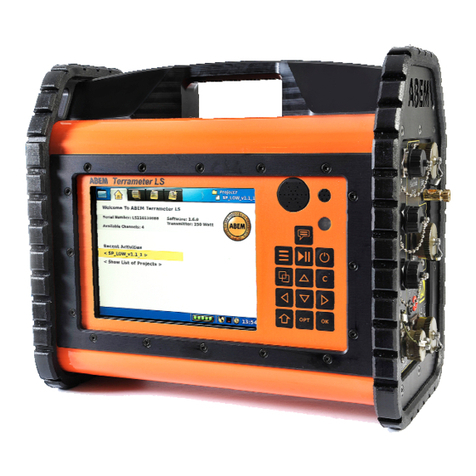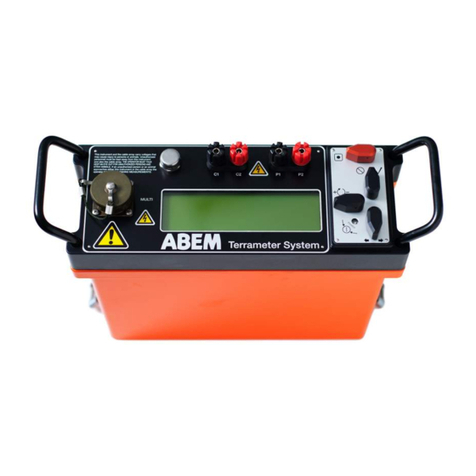C. Once the test measurements have finished, plot the data and choose the best resistor:
-hit “Plot” and a new window will open showing the
resulting curves;
-the time axis is in real units but the decay curves
are normalized within the current zoom level to
arbitrary units;
-the arrow keys allow panning and zooming with the
“Shift” key ( ) toggling between the two functions;
-keys 1 to 6 will switch on/off the individual decay
curves;
-pressing numeric key “0” cycles through adjacent
decay curves, showing two at a time, for easier
comparison;
-decreasing the line width can help visualize the
curves better;
-decreasing the line width can help visualize the curves better;
-if the curve is inverted, reverse the Rogowski coil or place it on the other tail of the TX;
-the aim is to pick the decay curve with the steepest drop-off which also returns to zero quickly and
without too much further oscillation –typically larger loops and more conductive ground require bigger
damping resistors;
-once the best resistance value has been identified, press “Esc”to close the Rogowski plotter and select
the relevant resistor from the drop down menu.
D. Using an external damping resistor:
-if a custom resistance value is desired it is possible to
mount one externally in parallel with the transmitter
loop;
-use a good quality “power resistor”that can withstand
the load put on it by the transmitter;
-the resistor should be attached to the instrument end
of the 3m TX lead-in cable (right) –although this image
depicts the connection on a WalkTEM 1, the
arrangement would look the same on a WalkTEM 2 TX
unit;
-connection of the Rogowski coil should be on the TX
lead-in cable and not around the resistor leads;
-the results of the Rogowski test for this external resistor
will be the decay labelled “none”as none of the internal
resistors are in use on that measurement.
NOTE: When a Rogowski coil test is run with an external resistor attached, the
decays shown for the internal resistors will be affected by the external resistor’s
presence; those decays will show the combined effect of the external resistor and the internal resistor.
E. Using an external damping resistor:
-the results of the tests are written out to a time-stamped folder and stored within the file structure of
the regular measurement data;
-the results are in a simple text format and therefore can be imported into other software packages for
plotting and / or further analysis.






























